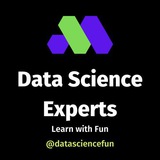tgoop.com/datasciencefun/2327
Last Update:
Three different learning styles in machine learning algorithms:
1. Supervised Learning
Input data is called training data and has a known label or result such as spam/not-spam or a stock price at a time.
A model is prepared through a training process in which it is required to make predictions and is corrected when those predictions are wrong. The training process continues until the model achieves a desired level of accuracy on the training data.
Example problems are classification and regression.
Example algorithms include: Logistic Regression and the Back Propagation Neural Network.
2. Unsupervised Learning
Input data is not labeled and does not have a known result.
A model is prepared by deducing structures present in the input data. This may be to extract general rules. It may be through a mathematical process to systematically reduce redundancy, or it may be to organize data by similarity.
Example problems are clustering, dimensionality reduction and association rule learning.
Example algorithms include: the Apriori algorithm and K-Means.
3. Semi-Supervised Learning
Input data is a mixture of labeled and unlabelled examples.
There is a desired prediction problem but the model must learn the structures to organize the data as well as make predictions.
Example problems are classification and regression.
Example algorithms are extensions to other flexible methods that make assumptions about how to model the unlabeled data.
BY Data Science & Machine Learning
Share with your friend now:
tgoop.com/datasciencefun/2327
